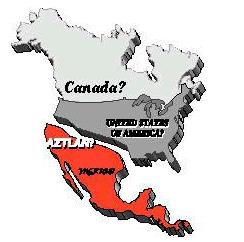
MEChA
Racism in California Education
The Cosmic Race, founding text for Chicano Studies, MEChA, and the National Council of La Raza
By Lloyd Billingsley, August 15, 2019 2:05 am
“The California Department of Education has released an unintelligible draft of ethnic studies gibberish,” reports Katy Grimes, who provided a sample, from the 2020 model curriculum:
Ethnic Studies is xdisciplinary, in that it variously takes the forms of being interdisciplinary, multidisciplinary, transdisciplinary, undisciplinary, and intradisciplinary. As such, it can grow its original language to serve these needs with purposeful respellings of terms, including history as herstory and women as womxn, connecting with a gender and sexuality lens, along with a socioeconomic class lens at three of its intersections.g
And so on. The proposed curriculum “critically grapples” with forms of oppression including “white supremacy, race and racism, sexism, classism, homophobia, islamophobia, transphobia, and xenophobia.” No mention of anti-Semitism, recently on display in the synagogue attack in Poway, in San Diego County.
If Californians find this disturbing, they might consider the openly racist material their tax dollars have been funding for decades.
“Any teacher can corroborate that the children and youths descended from Scandinavians, Dutch, and English found in North American universities, are much slower, and almost dull, compared with the mestizo children and youths from the south.”

That is from the first bilingual edition of The Cosmic Race, published in 1979 by the Department of Chicano Studies at California State University at Los Angeles. The author is José Vasconcelos, Mexico’s minister of public education from 1921-24, and a presidential candidate in 1929.
The book contends that the fusion of Spaniards and Indians is a new race “infinitely superior to all that have previously existed.” Vasconcelos’ four “racial trunks” are the Black, the Indian, the Mongol, and the White, but these are separate and unequal. The Black is “eager for sensual joy, intoxicated with dances and unbridled lust.” Vasconcelos also calls them “the “Lemurians, the black race from the south.”
No worries because “the lower type of the species will be absorbed by the superior type. In this manner, the Black could be redeemed and, step by step by voluntary extinction the uglier stocks will give way to the more handsome. Inferior races, upon being educated, would become less prolific.” And “in a few decades of aesthetic eugenics, the Black may disappear.” Denzel Washington and Halle Barry may want to call their agents.
Vasconcelos cites “the Mongol, with the mystery of his slanted eyes that see everything according to a strange angle.” And the mission of the cosmic race “cannot be fulfilled either by the peoples of Asia, who are exhausted, or at least, lacking in the necessary boldness for new enterprises.” Apparently Andrew Yang and Shinzo Abe never got that memo.
Vasconcellos ranks the Indian with “inferior species.” On the other hand, “the mestizo, the Indian and even the Black are superior to the White in a countless number of properly spiritual capacities.” Just a simple kind of thing any teacher could corroborate.
“There is no going back in history,” writes Vasconcelos. “No race returns. Each one states its mission, accomplishes it and passes away.” More specifically, “we belong to tomorrow, while the Anglo-Saxons are gradually becoming more a part of yesterday.” The anglo-saxons, who as Paul Johnson notes have not existed for 500 years, are code for people with names like O’Reilly, Archambault, and Olsen.
The late Didier Jaén, The Cosmic Race translator and professor of Latin American literature at UC Davis, noted that most critics reject Vasconcelos’ idea of a superior race, and that Marxists “summarily dismissed” the notion. But then, the Chicano movement in the United States, identified with the concept of La Raza, “giving it new life, when in Latin America this concept had been forgotten and lost prestige.”
As Mexican-American Communist Bert Corona explained in Memoirs of Chicano History, Vasconcelos’ racial theory was “close to the kind of German racial superiority theory supported by Hitler.” Vasconcelos became a fascist, and as Corona explained, “I couldn’t accept all this. We’re not a superior race.” Even so, Vansconcelos’ razaismo is the defining idea of “Chicano Studies,” the Movimiento Estudiantil Chicano de Azltlan, (MEChA) and the influential National Council of La Raza, which in 2017 changed its name to UnidosUS.
José Vasconcelos, who held forth until 1959, provides no grade records, SAT scores, or accomplishments to prove his claim that university students descended from Scandinavians, Dutch, and English are slower, almost dull, compared to those superior mestizos from the south.
As Bert Corona said, this is racism of the worst kind. Californians have a right to wonder why such loathsome views have any place in the state’s education system.








I think people would be surprised at what they are talking about on Telemundo and others, if we could get them translated .
I suggest that California, Oregon, Washington and New York just leave the union all together. Let others with common sense and real purpose live our lives without the hate and destruction the leftist lunnies want.